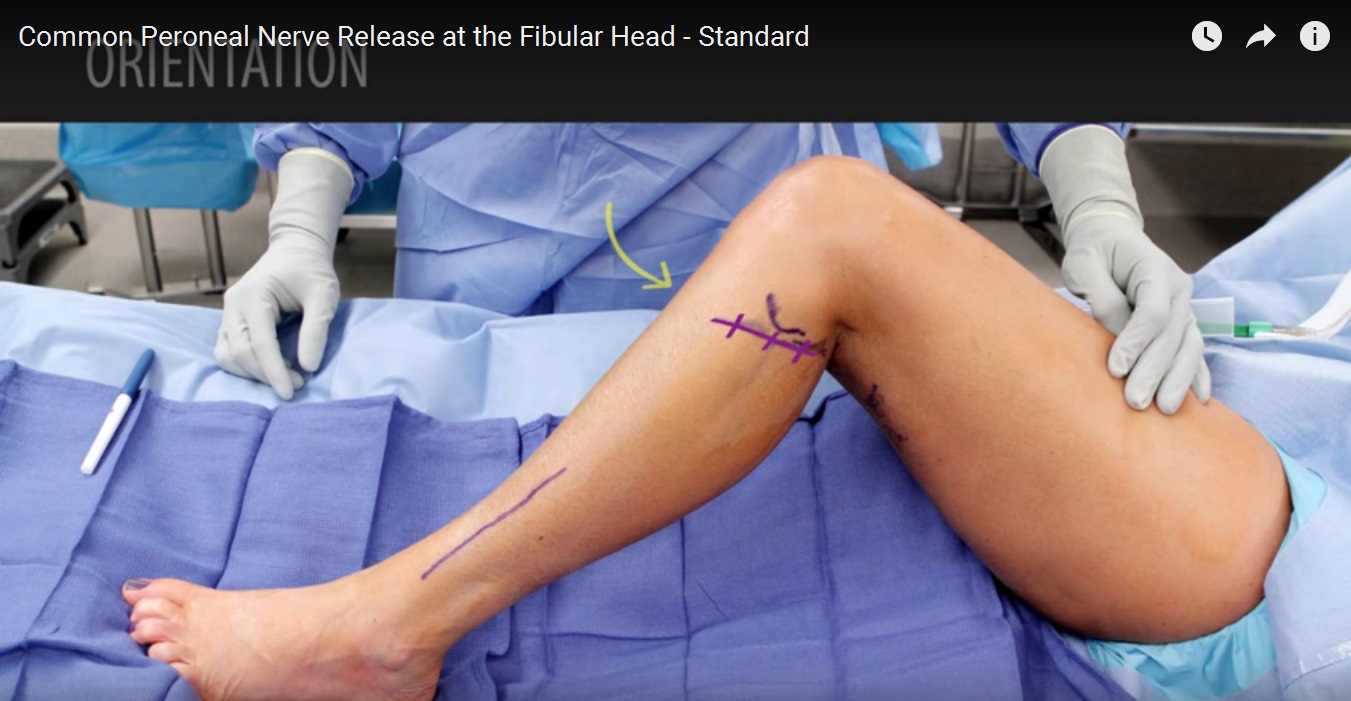Courtesy: susan Mackinnon, Andrew Yee, WUSTL Peripheral Nerve Surgery, Washington University School of Medicine
Division of Plastic Reconstructive Surgery
Department of Surgery
Saint Louis, MO, USA
Entrapment of the common peroneal nerve (CPN) at the fibular head is an under-recognized lower extremity neuropathy that contributes to weakness of the musculature within the anterior and lateral compartments of the leg and progress to foot drop. As well, there can be numbness/pain within the territory of the superficial and deep peroneal nerve. Compression of the CPN can be attributed primarily to the posterior crural intermuscular septum found deep to the leading-edge of the peroneus longus. The anterior crural intermuscular septum and a third intermuscular septum are also associated with this compression neuropathy, as well as the surrounding fascia layer that entraps the CPN on top of the deep tendinous fascia. These structures are released to decompress the CPN at the fibular head. Motor branches from the CPN have been seen to pierce these intermuscular septums. In this case, the patient presented with a complex history of neuropathic pain in the lower left leg following multiple knee surgeries over a span of many years. During examination, the patient was able to tolerate light touch related to compression-type injury rather than withdrawing from severe pain in keeping with a neurectomy-type injury; thus compression neuropathy and not neuroma injury was suspected. The scratch collapse test with ethyl chloride revealed provocation, first at the CPN at the fibular head, then second at the saphenous nerve in the thigh, and then third at the superficial peroneal nerve. Her surgical management included the release of these three nerves. This video outlines the surgical technique for releasing the CPN at the fibular head. The lateral sural cutaneous nerve was not evident in this case.

Leave a Reply